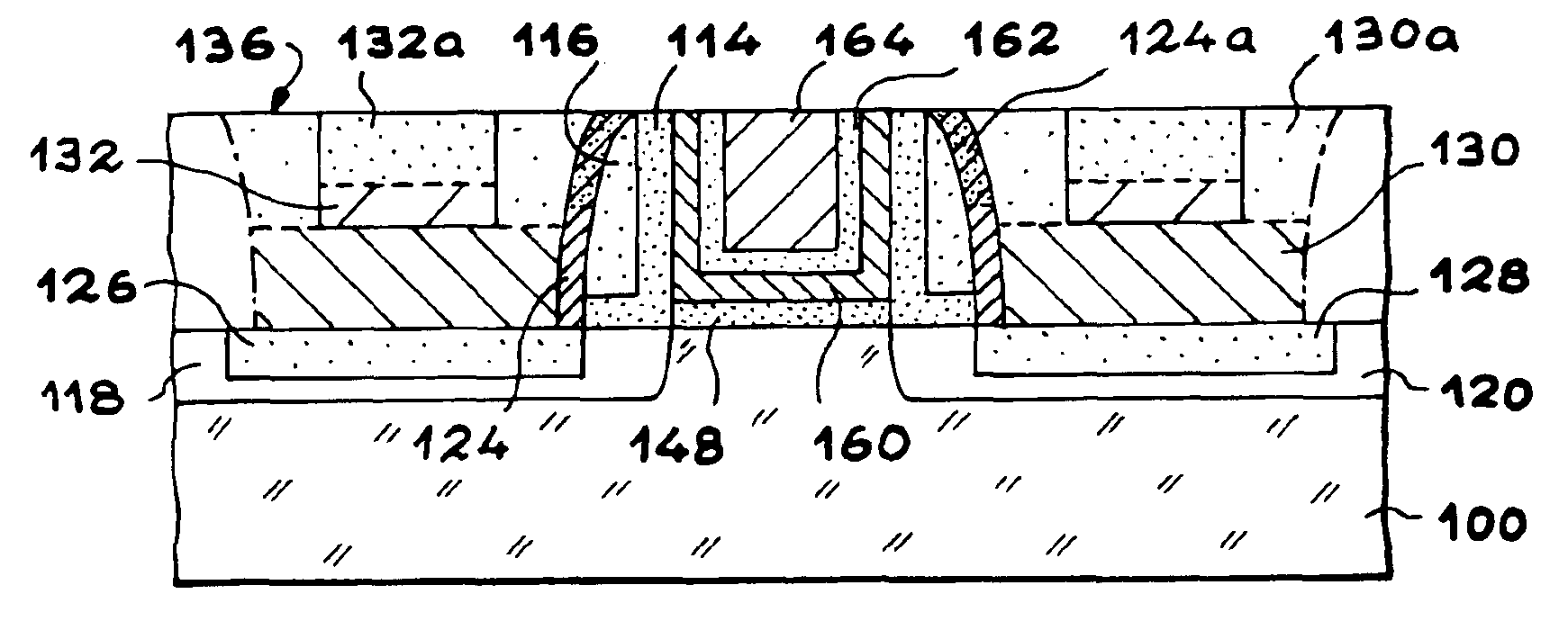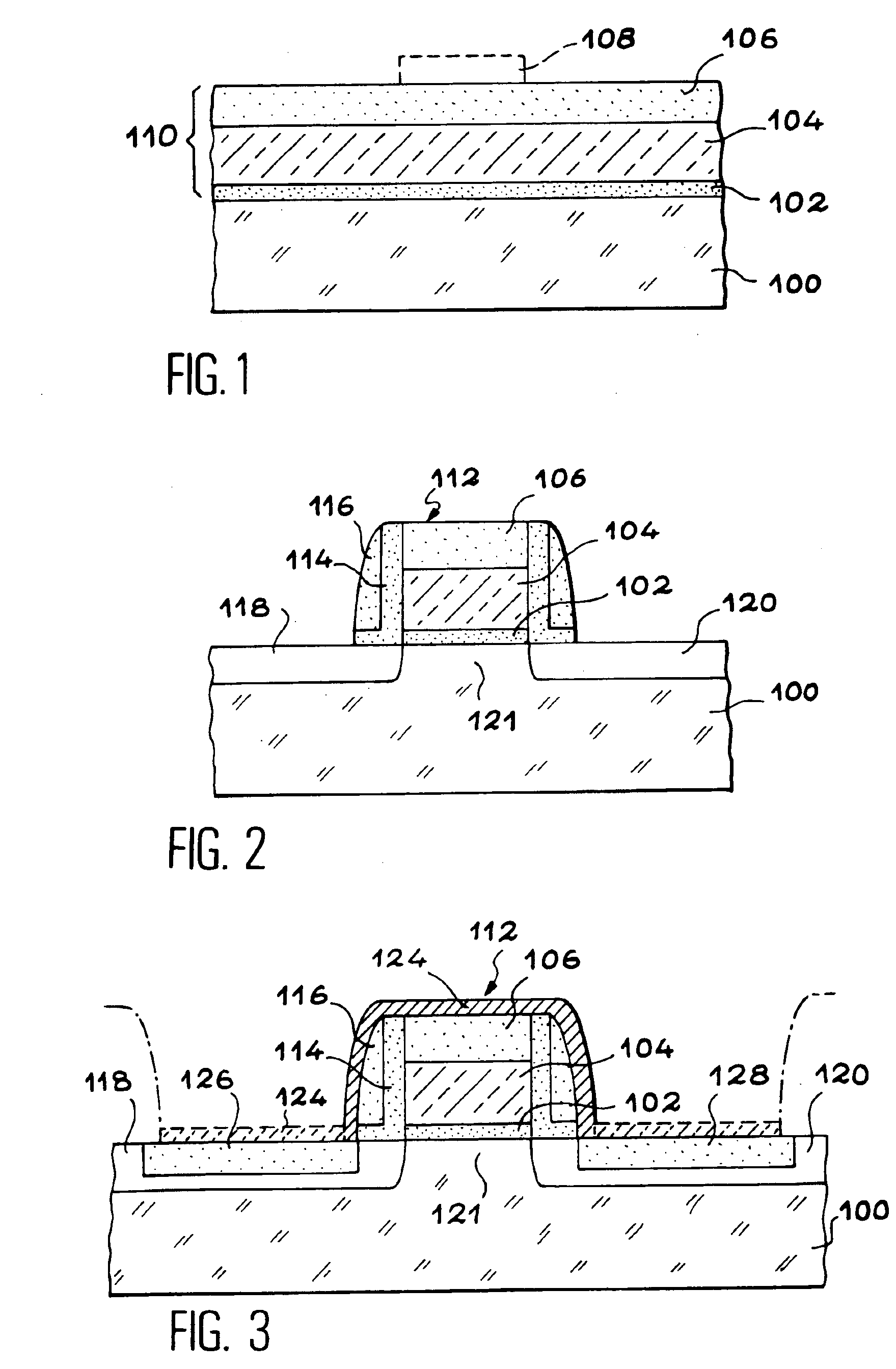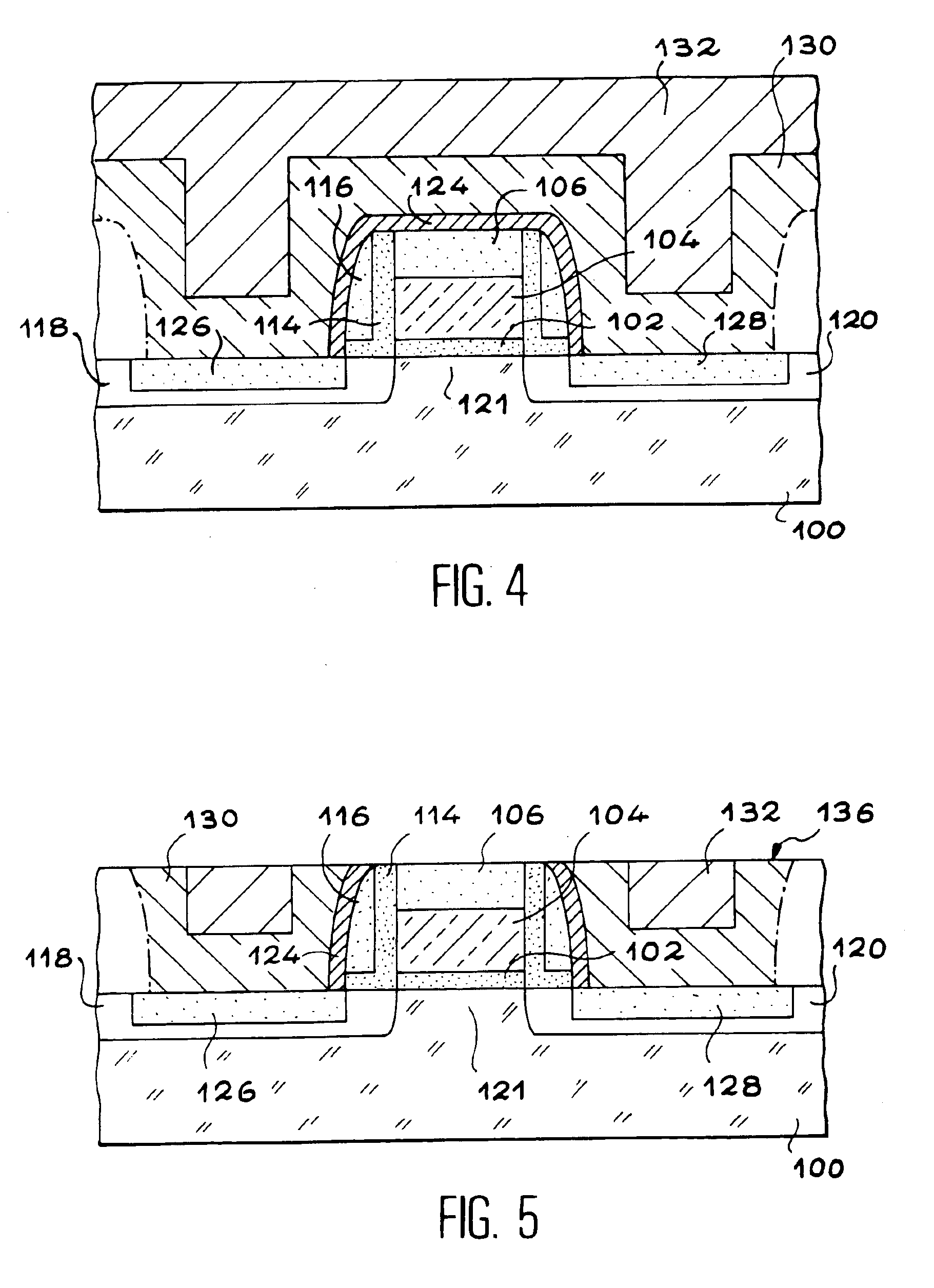Method for making an electronic component with self-aligned drain and gate, in damascene architecture
a technology of damascus and electronic components, applied in the direction of basic electric elements, electrical equipment, semiconductor devices, etc., can solve the problem that the method of document (2) remains relatively complex however
- Summary
- Abstract
- Description
- Claims
- Application Information
AI Technical Summary
Benefits of technology
Problems solved by technology
Method used
Image
Examples
Embodiment Construction
Identical, similar or equivalent parts in the figures described below carry the same numerical references so as to facilitate cross-referencing from one figure to another. Also, even though the following description only concerns the fabrication of components on a solid substrate, in silicon in this case, it is to be emphasized that the methods remain the same for forming components on insulated thin layer substrates, such as substrates of SOI type (Silicon On Insulator).
FIG. 1 shows a silicon substrate 100 whose surface has been oxidized in order to form a silicon oxide layer 102, a so-called pedestal layer.
On layer 102 are successively deposited a layer of polycrystalline or amorphous silicon 104, then a layer of silicon nitride 106. These layers together form a stack 110. The total thickness of layers 104 and 106 is in the order of 100 to 300 nm for example, and substantially corresponds to the thickness of the transistor gate which is finally obtained at the end of the method of...
PUM
 Login to View More
Login to View More Abstract
Description
Claims
Application Information
 Login to View More
Login to View More - R&D
- Intellectual Property
- Life Sciences
- Materials
- Tech Scout
- Unparalleled Data Quality
- Higher Quality Content
- 60% Fewer Hallucinations
Browse by: Latest US Patents, China's latest patents, Technical Efficacy Thesaurus, Application Domain, Technology Topic, Popular Technical Reports.
© 2025 PatSnap. All rights reserved.Legal|Privacy policy|Modern Slavery Act Transparency Statement|Sitemap|About US| Contact US: help@patsnap.com



